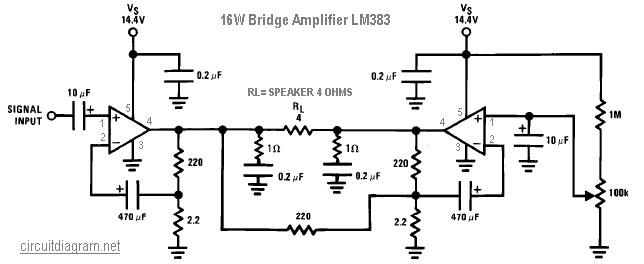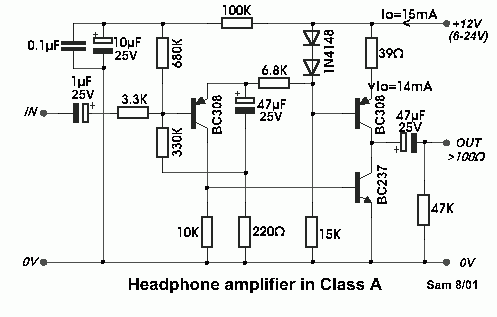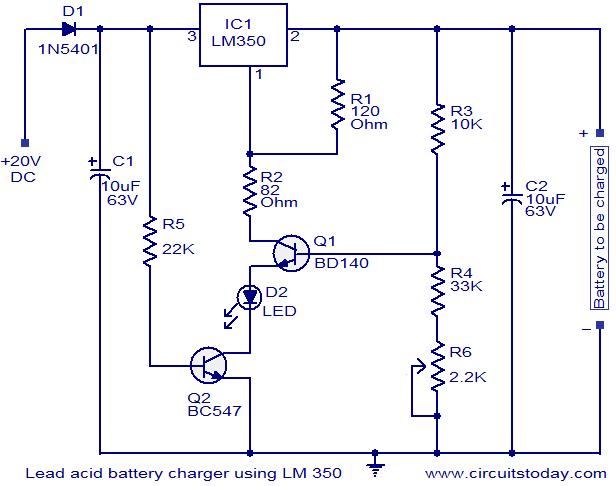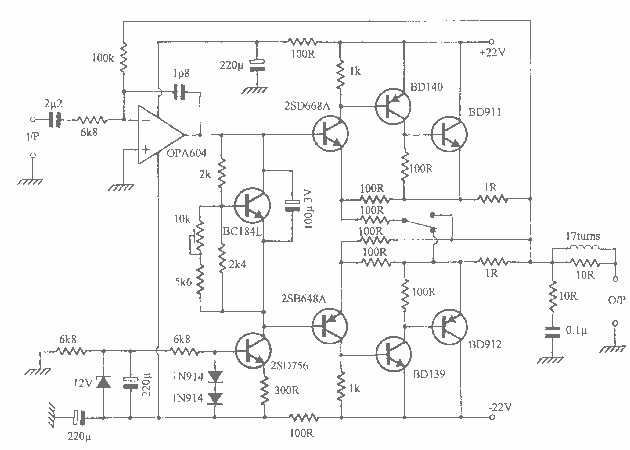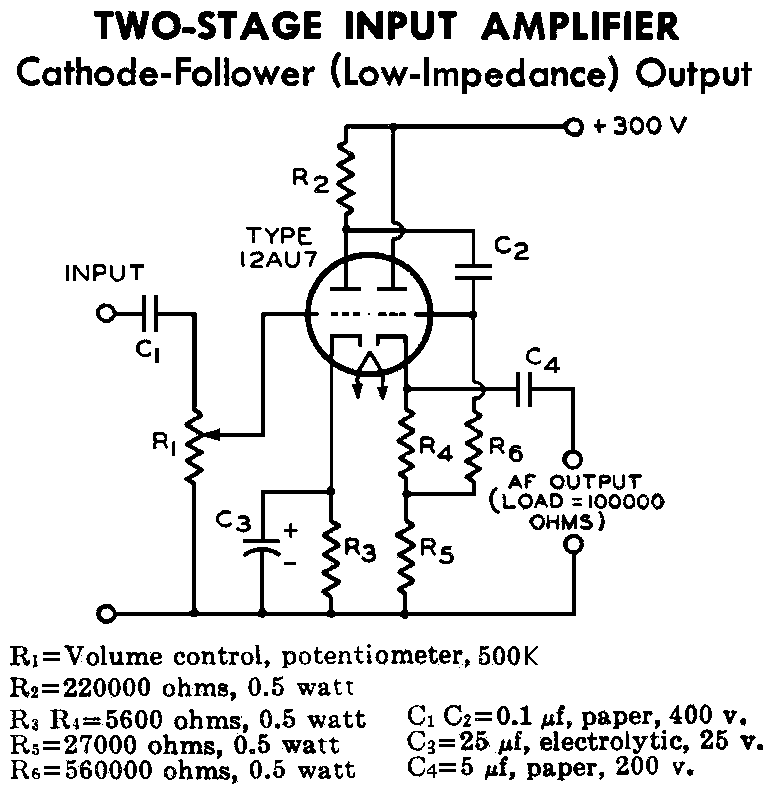
36 watt audio power amplifier using tda1562q
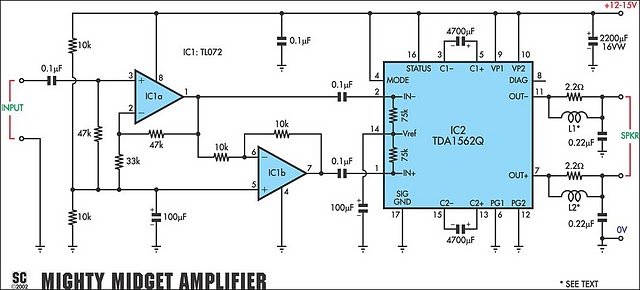
It is based on a Philips class-H audio amplifier integrated circuit and can deliver 36W RMS or 70W music power, all from a 13.8V supply. The new Mighty Midget Amplifier can produce approximately 36W RMS continuously into a 4-ohm load when using a 13.8V supply. However, it is the 70W of output power that can be delivered during dynamic (music) signal conditions that truly stands out.
The Mighty Midget Amplifier utilizes a Philips class-H audio amplifier IC, which is designed to enhance efficiency while maintaining high-quality audio output. This amplifier operates at a nominal supply voltage of 13.8V, making it suitable for automotive and portable applications.
The circuit is capable of delivering a continuous output power of 36W RMS into a 4-ohm load, which is ideal for driving speakers in various audio systems. The class-H design allows for improved thermal management and reduced power dissipation compared to traditional class AB amplifiers. This is achieved by modulating the supply voltage to the output stage based on the input signal, thus optimizing the power delivered to the load.
During dynamic audio playback, such as music with varying amplitude, the amplifier can achieve a peak output power of 70W. This capability enables the amplifier to handle transient signals effectively, providing a robust listening experience without distortion. The high peak power output is particularly beneficial for reproducing the dynamic range of music, ensuring that both soft and loud passages are rendered accurately.
The circuit design likely includes various protection features, such as short-circuit protection, thermal shutdown, and overcurrent protection, to ensure reliability and longevity of the amplifier under different operating conditions. Additionally, appropriate filtering capacitors and inductors may be included in the power supply section to minimize noise and enhance performance.
Overall, the Mighty Midget Amplifier represents a compact yet powerful solution for audio amplification, combining efficiency and high output power to meet the demands of modern audio applications.It`s based on a Philips class-H audio amplifier IC and can deliver 36W RMS OR 70W music power, all from a 13.8V supply. Our new Mighty Midget Amplifier can really pack a punch - around 36W RMS continuous into a 4-ohm load when using a 13.8V supply.
However, it`s the 70W of output power that it can deliver during dynamic (music) signal conditions that really make you sit up and take notice.. 🔗 External reference
The Mighty Midget Amplifier utilizes a Philips class-H audio amplifier IC, which is designed to enhance efficiency while maintaining high-quality audio output. This amplifier operates at a nominal supply voltage of 13.8V, making it suitable for automotive and portable applications.
The circuit is capable of delivering a continuous output power of 36W RMS into a 4-ohm load, which is ideal for driving speakers in various audio systems. The class-H design allows for improved thermal management and reduced power dissipation compared to traditional class AB amplifiers. This is achieved by modulating the supply voltage to the output stage based on the input signal, thus optimizing the power delivered to the load.
During dynamic audio playback, such as music with varying amplitude, the amplifier can achieve a peak output power of 70W. This capability enables the amplifier to handle transient signals effectively, providing a robust listening experience without distortion. The high peak power output is particularly beneficial for reproducing the dynamic range of music, ensuring that both soft and loud passages are rendered accurately.
The circuit design likely includes various protection features, such as short-circuit protection, thermal shutdown, and overcurrent protection, to ensure reliability and longevity of the amplifier under different operating conditions. Additionally, appropriate filtering capacitors and inductors may be included in the power supply section to minimize noise and enhance performance.
Overall, the Mighty Midget Amplifier represents a compact yet powerful solution for audio amplification, combining efficiency and high output power to meet the demands of modern audio applications.It`s based on a Philips class-H audio amplifier IC and can deliver 36W RMS OR 70W music power, all from a 13.8V supply. Our new Mighty Midget Amplifier can really pack a punch - around 36W RMS continuous into a 4-ohm load when using a 13.8V supply.
However, it`s the 70W of output power that it can deliver during dynamic (music) signal conditions that really make you sit up and take notice.. 🔗 External reference
